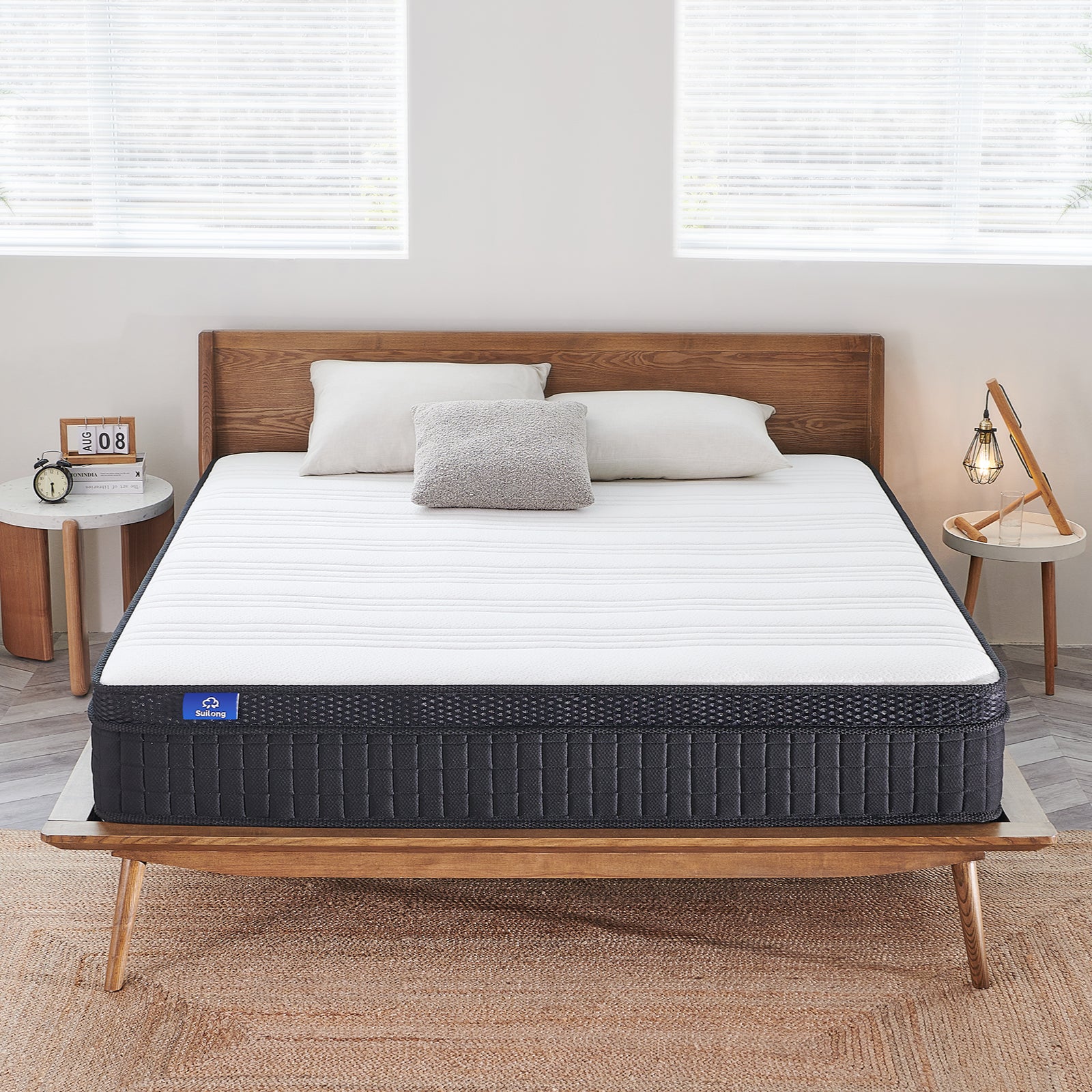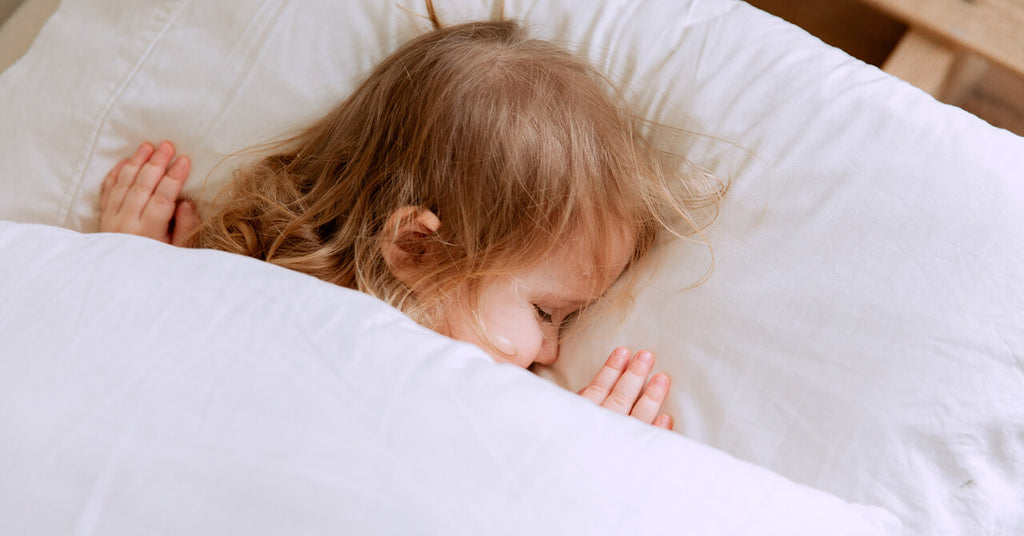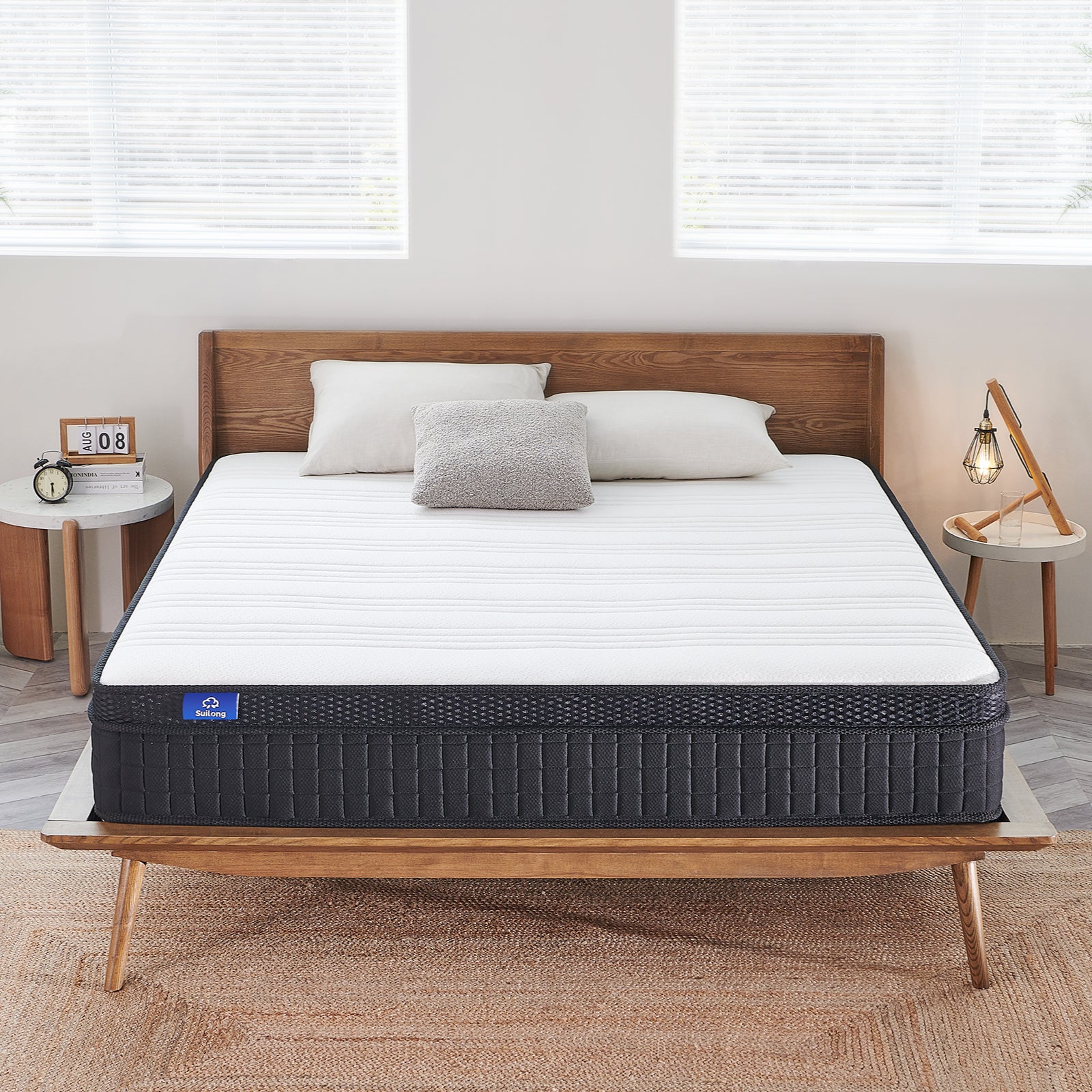Best Sleeping Position For Baby With Stuffy Nose

Explore the best mattress selection criteria for babies with stuffy noses. Learn how the right mattress like Suilong can significantly improve their sleep.
1. Effects of nasal congestion in babies
1.1 Disruption of sleep due to nasal congestion
As a parent, I know the discomfort that babies experience when they have a stuffy nose. Nasal congestion is more than just a small blocked nose.
- Causes sleep disruption: every time your baby tries to fall into a deep sleep, a stuffy nose can cause them to wake up because they have to struggle to breathe.
- Snoring and apnea: due to the blocked air passage, your baby may experience snoring or even brief apnea.
Nasal congestion and breathing difficulties
Nasal congestion not only interferes with sleep, but also directly affects your baby's breathing.
- Frequent and shallow breathing: Nasal congestion can make your baby's breathing frequent and shallow.
- Over-reliance on mouth breathing: Your baby may start to breathe more through the mouth, which may not be as healthy as nose breathing.
1.2 How to cope with problems caused by nasal congestion
I have tried some of the following methods to face the problem of nasal congestion in babies, and I hope they will be helpful to other parents as well.
- Adjust the position of your baby's head: Keep your baby's head slightly elevated, which will help nasal secretions to flow out and reduce blockage.
- Keep the air in the room moist: I use a humidifier to increase the humidity in the room to prevent my baby's nasal passages from getting too dry.
- Use saline solution: Saline solution can help lubricate the nasal passages and reduce blockage.
Nasal congestion causes discomfort to babies that every parent would like to avoid, but by doing it the right way and responding in a timely manner, we can alleviate your baby's discomfort and ensure that they get a good night's sleep and breathe well.
2. The best sleeping position for babies with nasal congestion
As parents, it always makes us doubly anxious when our babies have nasal congestion. Here, I would like to share with you some knowledge and suggestions about the best sleeping positions for babies with nasal congestion.
2.1 Recommended Sleeping Positions
1. Benefits of side sleeping and its operation guide
Side-lying is a best sleeping position for babies with nasal congestion.
Benefits of Side Sleeping:
- Side-lying helps your baby's nasal passages to discharge secretions more easily.
- This position reduces the risk of breathing difficulties and keeps your baby breathing well.
- Side-lying also helps your baby breathe better and reduces the risk of choking.
Operating Instructions:
- When placing your baby on his/her side, place a small pillow or rolled up towel behind him/her to support his/her back.
- You need to make sure that your baby's head is naturally tilted so that nasal secretions can flow out more easily.
- Always observe your baby's breathing and keep the sleeping environment fresh and moist.
2.2 Sleeping Positions to Avoid
1. Risks of prone sleeping and its adverse effect on nasal congestion
Although some parents may choose to put their babies to sleep in prone position, I suggest you to avoid this sleeping position when your baby has nasal congestion.
Risks of prone sleeping:
- Sleeping prone may cause your baby to have a more difficult time breathing because this position presses on your baby's chest and lungs.
- If your baby's nose is pressed against the mattress, it can easily lead to breathing problems.
- Prone sleeping also increases the risk of your baby choking.
Adverse effects on nasal congestion:
- Lying prone makes it more difficult for your baby's nasal secretions to drain, which can aggravate nasal congestion.
- This position is also detrimental to your baby's ability to breathe on his or her own, which may make it more difficult for him or her to fall and stay asleep at night.
3. Natural ways to relieve nasal congestion
In the home environment, we can relieve your baby's nasal congestion through some natural methods.
3.1 Home remedies
1. Salt water nose drops
Saline nose drops are a simple and effective method. First of all, we need to prepare the right amount of saline, which can be purchased at the drugstore, or at home with boiled purified water and salt in proportion to the mix. When giving the baby nose drops, let the baby lie flat, gently drop the saline into each nostril of the baby, 1-2 drops each time, and then wait a moment, so that the saline fully wet the nasal cavity, to help dissolve the mucus in the nasal cavity.
2. Use a humidifier
Humidifier is also a good helper to relieve the baby's nasal congestion. In the dry season, the indoor air is too dry may aggravate the baby's nasal congestion. At this time, we can place a humidifier in the baby's room to keep the indoor humidity between 40% and 60%, which will help soften the mucus in the baby's nasal cavity and make it easier to discharge.
3.2 Indoor environment that promotes breathing
1. Maintain air circulation
The freshness of indoor air is directly related to the smoothness of baby's breathing. We should often open the windows to keep the indoor air circulation fresh. However, when ventilating, we should pay attention to avoid exposing the baby directly to the wind, in order to prevent the baby from getting cold.
2.Control indoor humidity
The control of indoor humidity is also very critical. On the one hand, too low humidity will make the baby's nasal mucosa dry, aggravating nasal congestion; on the other hand, too high humidity may breed mold and bacteria, which is not good for the baby's respiratory health. Therefore, we have to maintain suitable indoor humidity through reasonable ventilation and the use of humidifiers.
Through the above home remedies and environmental adjustments, we can alleviate the discomfort of babies when they have nasal congestion to a certain extent and promote smooth breathing. Of course, if your baby's nasal congestion persists and does not improve or if he/she has other uncomfortable symptoms, we should still take him/her to the hospital in time and follow the professional doctor's advice and treatment.
4. Quick ways to clear baby's stuffy nose
When I found the baby nasal congestion, in addition to adopting the appropriate sleeping position, it is also very necessary to use some aids to unblock the baby's nasal passage. Here are the two methods I often use.
4.1 Use of Nasal Aspirator
Nasal aspirator is one of the gadgets that I often use when my baby has a stuffy nose.
What does a nasal aspirator do?
- Quick Clearance: Nasal aspirator removes mucus from baby's nasal passages quickly, allowing baby to breathe more smoothly.
- Safe: Nasal aspirators designed for babies are usually very safe and will not harm your baby's delicate nasal passages.
Buying Tips
- Choose a brand: When buying, I would choose a well-known brand for better protection.
- Check the material: The material should be safe and non-toxic, preferably medical grade silicone or plastic.
- Easy to clean: The nasal aspirator needs to be easy to disassemble and clean to keep it clean and hygienic.
Tips for use
- Clean before use: I always make sure the nasal aspirator is clean before each use.
- Handle gently: Suction gently during use to avoid discomfort or injury to your baby.
- Clean after use: Clean the nasal aspirator after use to prepare it for the next use.
4.2 Utilize nasal spray
Nasal sprays are also my go-to for babies.
Nasal spray works
- Lubricates nasal passages: Spray can help lubricate your baby's nasal passages and reduce the consistency of mucus, making it easier to breathe.
- Anti-inflammatory: Some sprays with natural ingredients also have anti-inflammatory properties.
Selection Guide
- Choose non-irritating: I would choose a non-irritating product to avoid harming your baby's nasal passages.
- Check the ingredients: It is better to have natural ingredients in the ingredient list and avoid additives and preservatives.
- Focus on packaging: Packaging should be well sealed to prevent product contamination.
How to use
- Spraying distance: I would control the distance between the spray and the nasal passages to avoid spraying too much or too close.
- Infrequent use: I will not rely too much on the spray, usually use it 2 to 3 times a day.
- Observe your baby's reaction: If your baby feels uncomfortable after using the spray, I will stop using it immediately and observe your baby's reaction.
5. Special treatment for nocturnal nasal congestion
1. Factors that aggravate nasal congestion at night
Nasal congestion is often worse at night. This is because the indoor air is usually drier at night. The dry air will make your baby's nasal mucosa drier and more sensitive, thus making him/her more prone to nasal congestion. In addition, changes in room temperature during the night may also affect your baby's breathing. A room temperature that is too hot or too cold may aggravate nasal congestion.
2. Analyze the impact of nighttime environment on nasal congestion
The nighttime environment is very different from the daytime. Firstly, the humidity in the air is usually lower at night, which makes the mucus in the baby's nasal cavity easy to dry up and form hard lumps, aggravating nasal congestion. Secondly, the temperature at night is usually lower, and the cold environment may also cause vasoconstriction of the mucous membrane in the baby's nasal cavity, leading to nasal congestion.
3. Improve the sleeping environment at night
In order for babies to breathe better at night, we need to optimize their sleeping environment. Here are some suggestions:
- Control room humidity: Use a humidifier to keep the room humidity in the right range, usually the recommended room humidity is 60% to 80%.
- Room temperature: Adjust the room temperature to a moderate level, avoiding high or low temperatures. Generally speaking, a room temperature of 18 to 24 degrees Celsius is appropriate.
4. Provide practical advice and tips to relieve nasal congestion at night
To take care of a baby with nasal congestion at night, we need to be more careful and patient. Here are some practical suggestions and tips:
- Adjust baby's sleeping position with a pillow: Elevating baby's head properly can help relieve nasal congestion and allow baby to breathe more smoothly.
- Keep your baby's nasal passages clean: Use a cotton swab to gently clear mucus and dry clumps from your baby's nasal passages before he or she goes to bed.
- Use a gentle nasal spray: Nasal sprays can help lubricate your baby's nasal passages and relieve nasal congestion.
With the above methods and tips, you can effectively relieve your baby's nasal congestion symptoms at night and ensure your baby has a good quality of sleep. I hope these tips can help parents in need!
6. Problems related to baby's breathing
When discussing issues related to baby's breathing, we need to focus on two main aspects: the way your baby breathes and how to cope with breathing difficulties caused by nasal congestion.
6.1 How your baby breathes
Whether your baby breathes through his mouth:
- Typically, newborns and small babies breathe mainly through their noses. This is because nose breathing filters and warms the inhaled air better.
- When a baby's nose is blocked, they may try to breathe through their mouth. However, this is not their natural way of breathing and can lead to breathing difficulties and discomfort.
How to observe the way your baby breathes:
- Observe the rise and fall of your baby's chest and tummy to get an idea of their breathing pattern.
- Pay attention to the sound of your baby's breathing; any unusual sounds may indicate an obstructed airway.
- Coping with nasal congestion causing breathing difficulties
Importance of observation:
- Constant observation of your baby's breathing pattern and rate is essential. Rapid, shallow or pauses in breathing need to be noted.
- Pay attention to your baby's face, if you notice a purple color or abnormal breathing, you need to seek immediate medical attention.
Response:
- If your baby is having difficulty breathing due to nasal congestion, the first thing you need to do is to gently clear your baby's nasal passages with a soft rubber bulb nasal aspirator.
- Saline nasal drops can be used to help dilute nasal secretions and make them easier to remove.
- If the above methods are ineffective, medical attention needs to be sought as soon as possible.
Preventive measures:
- Keep the air in your baby's bedroom moist, you can use a humidifier, but avoid making the room too humid.
- Clean out your baby's nasal passages regularly, especially during cold and dry seasons.
- If conditions permit, consider using an air purifier to reduce dust mites and other allergens in the room.
7. Choose a suitable mattress to help your baby's sleep
Sleep is the cornerstone of your baby's healthy growth, and a suitable mattress is an important factor in ensuring quality sleep.
7.1 Mattress selection criteria
- Material safety: When choosing a mattress, you need to pay attention to the materials used to ensure that they are non-toxic, free of harmful chemicals and friendly to your baby's skin and respiratory system.
- Appropriate firmness: The firmness of the mattress needs to be moderate. A mattress that is either too firm or too soft is not conducive to the proper development of your baby's bones, while a moderately firm mattress provides good support and comfort.
- Breathable: A mattress needs to be breathable to prevent your baby from sweating too much during sleep. A breathable mattress also prevents the growth of mold and bacteria and is better for maintaining cleanliness and hygiene.
7.2 Considerations for choosing a mattress for a baby with nasal congestion
- Provide extra support: For babies with nasal congestion, consider an adjustable mattress to provide extra support for the head and upper body when needed.
- Anti-allergy design: Choosing an anti-allergy mattress material and design can minimize allergic reactions and respiratory irritation, thus relieving nasal congestion.
- Easy to clean and maintain: Nasally congested babies may have extra secretions and stains, so the mattress needs to be easy to clean and maintain.
7.3 Benefits of the Suilong mattress
As a mattress designed for babies, the Suilong mattress has a unique design and choice of materials that fulfill the above mentioned buying criteria and considerations.
- Eco-friendly and non-toxic materials: Suilong mattresses are made of strictly screened eco-friendly materials, which are guaranteed to be free of harmful substances and can be safely used for baby's sleep.
- Suitable Firmness: After many tests and adjustments, the firmness of Suilong mattresses is set within the most suitable range of firmness for baby's sleep, which can support baby's body and maintain a sense of comfort.
- Excellent Breathability: Designed with breathable materials and construction, the Suilong mattress prevents sweating and allergic reactions, and is easy to clean and maintain.

Suilong Nimbus
12 Inch Hybrid Mattress
Look no further than the Suilong Nimbus 12-inch Hybrid Mattress.
Buy NowChoosing a suitable mattress not only guarantees a comfortable sleep for your baby, but also relieves and prevents nasal congestion and other problems to a certain extent. As a mattress made for babies, Suilong mattress is undoubtedly a quality choice worth considering. We hope every baby can have a sweet dream and grow up healthy and happy!
FAQs
Q: What should be the primary considerations when choosing a mattress for a baby with a stuffy nose?
A: Safety, appropriate firmness, and breathability are crucial. Select a non-toxic, hypoallergenic mattress that offers moderate firmness and excellent air circulation to alleviate congestion.
Q: Why is a medium-firm mattress recommended for babies?
A: A medium-firm mattress provides the necessary support for a baby's developing body while ensuring comfort and reducing the risk of congestion during sleep.
Q: How does a breathable mattress help a congested baby?
A: A breathable mattress prevents excessive sweating and keeps the baby cool. It also reduces the risk of allergens and bacteria that may worsen nasal congestion.
Q: Can adjustable mattresses provide relief to babies with stuffy noses?
A: Yes, adjustable mattresses can offer elevated support for the baby’s upper body, helping to ease breathing and reduce congestion during sleep.
Q: Why is Suilong mattress a suitable choice for babies with nasal congestion?
A: Suilong mattresses are crafted with hypoallergenic, non-toxic materials and designed for optimal firmness and breathability, providing a comfortable sleep environment for congested babies.
-
Posted in
best sleeping position, Buyer's Guide, Choosing the Right Mattress, Side Sleepers, Sleep Experts, sleep health, sleep position, Sleep Tips, sleeping positions



















